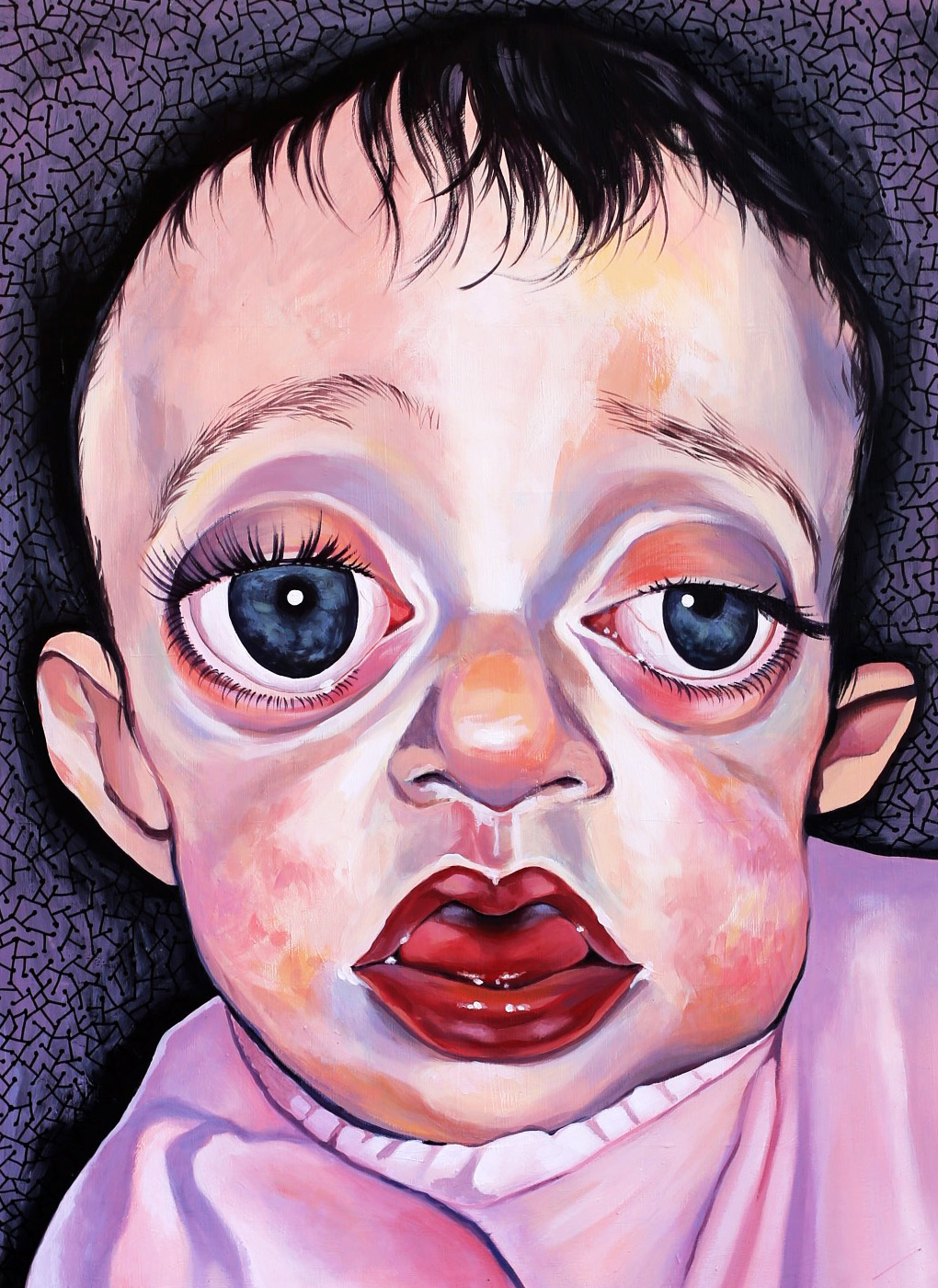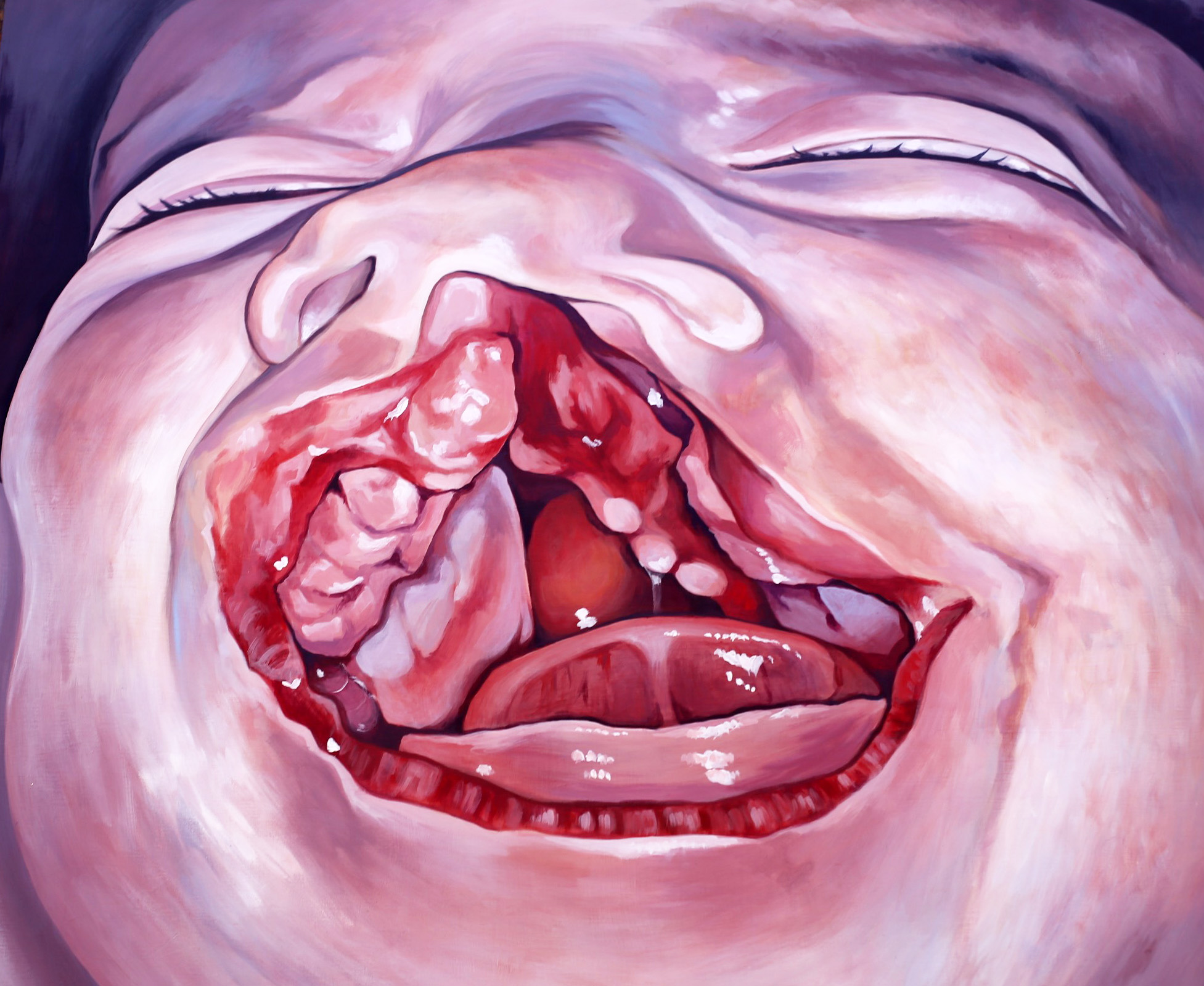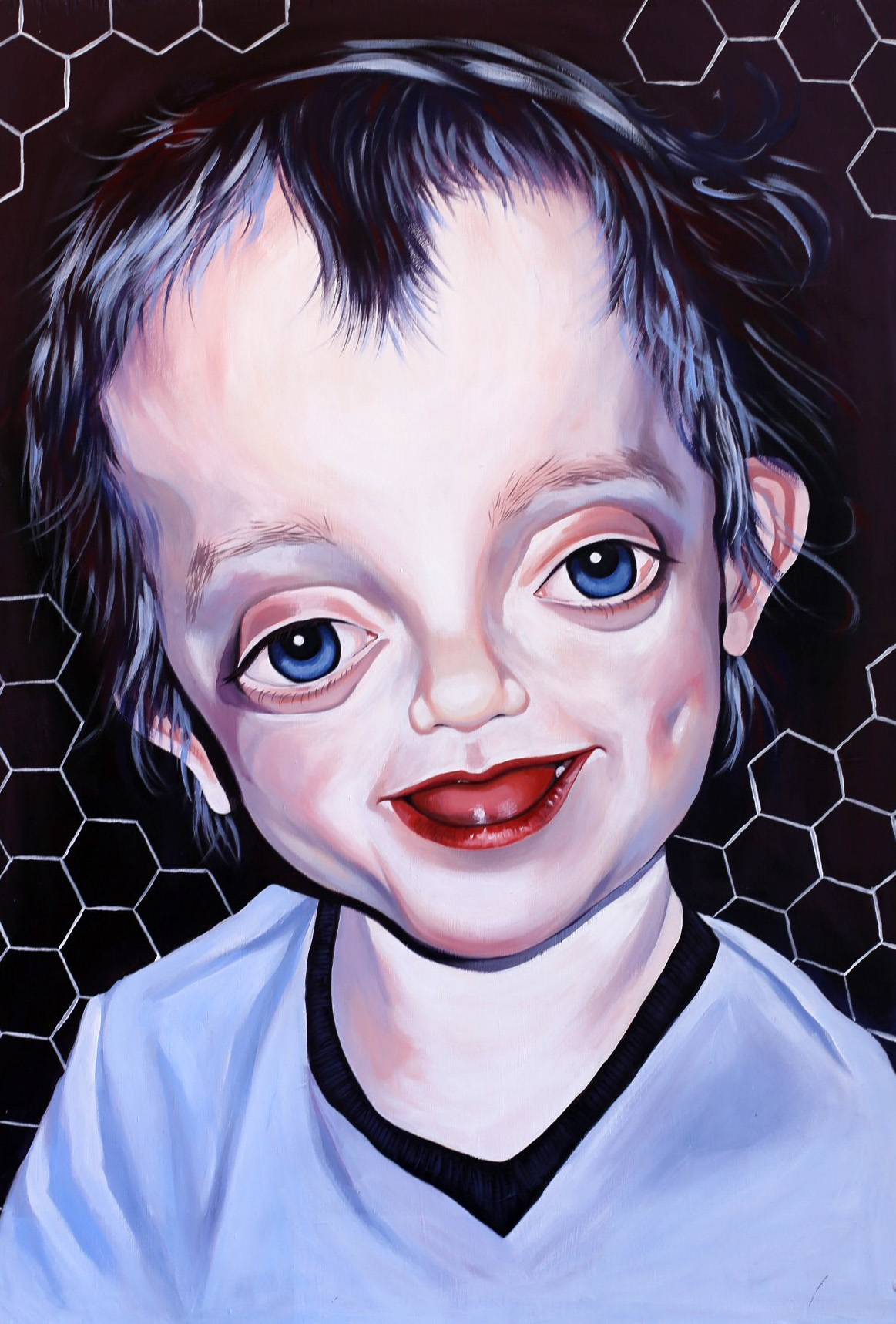Disability as Metaphor: Portraits of Unseen Faces
Metaphors pervade our language—embellishing the mundane, reifying the abstract, and deconstructing the complex. However, the ubiquitous use of metaphors gives them great power in solidifying associations and shaping perspectives. Thus, metaphors can veil true meaning behind contrived relationships. This power, writer Susan Sontag argues in Illness as Metaphor, misinforms views and attitudes on illness and thereby wrongs the patient. The continual need for metaphors, especially in medicine, highlights society’s deep-seated aversion to addressing what is dark and unfamiliar. Adopting Sontag’s assertion that illness metaphors only deepens the loss of touch–both physical and emotional–between the healthy and the sick, this collection of artwork examines those metaphors that distort societal conceptions of disability. I aim to show that individuals with anomalous faces must counter the power of metaphors to reconcile their sense of self.
From unseen, overlooked, and typecast faces, I derive my inspiration to show that every face is worthy of a portrait, both in its process and at its completion.
The first fundamental metaphor is the reduction of disability to a product of errant biological processes, molecules, and even atoms. Evaluation of disability tends to neglect the person in lieu of the family pedigree, faulty genes, and interrupted pathways as a means to advance learning. However, this perspective fails to offer appropriate support and closure to real people adjusting to radically changed lives. If the diseased are perceived by medical professionals as mere symptom-carriers, then the disabled are fleshy gene-houses, and their conditions are the manifestation of broken plumbing or an electrical short-circuit.
The second metaphor is that disability is perceived as a form wholly separate from a person’s identity, thereby implying that a suppressed, “healthy” self is the true self and it is the duty of medicine to aid in its release. People also believe that a cure lies partly in a “mobilization of will”, as if the diseased self and true self were two mutually exclusive and antagonistic entities. It would seem that achievement for the disabled individual arises from liberation, the moment they shake off their disability and a hidden, more ‘typical’ self is temporarily revealed or activated. Only when health is viewed as a subjective continuum of experience—not an on/off switch—will we be able to understand that a state of objective health can be one of subjective illness and vice versa. This reversal and paradoxical association of “on” with “bad” and “off” with “good” rejects the metaphor of disease as a “possessor” and “seducer”.
The metaphor of medicine as the savior of the “true self” means that it is shocking when the “right” physiological treatment or surgery does not unleash a well-adjusted person. As neurologist Oliver Sacks contends, this metaphor wrongs the dynamic true self, a self he clarifies as the inalienable right for “Great Health” which derives from the power of the individual to choose who he is and who he can be, a balance between two different selves with equal standing.
Serving as a buffer between us and complex uncertainty, the metaphors surrounding disease and disability make apparent the large insufficiencies of our culture which disconnect perspectives of the healthy and ill, as Sontag argues, and disabled and abled, as I argue. Fear of differences and scientific shortcomings shape our perceptions and underlie our uneasiness when confronted by disability. We must recognize disability as an acceptable identity instead of a shameful flaw, learning to celebrate diverse idiosyncrasies and engaging in empathetic conversation as a catalyst for social and scientific progress. We must not make use of metaphors that reduce human beings to gene-carriers and victimize an oppressed healthy “self”. These metaphors thwart the self-advocacy and integration of disability, but also condone the contentious goal of rooting out and eliminating all forms of disability in the future via genetic engineering and diagnostic screening. Once we vow to renounce metaphors in our discussion of disability, we will allow disability to exist and thrive by choice, awarding individuals the freedom necessary to achieve their Great Health.
If metaphors abbreviate and consolidate meaning, I will augment meaning by artistic reflection and celebration. These pieces balance the dialogue between the viewer and viewed by equalizing our gaze, dismantling the metaphor of disability as an “other”. The natural responses promoted by this work are rare opportunities to speak unburdened by metaphor. In the history of art, inspiration has commonly been sought in the “other”, and always with the objective of bottling otherness like an exotic perfume. Consumption of otherness is unequal; rarely have artists outspokenly advocated for the integration of otherness since it is the metaphors of otherness which transform the other into a marvel and commodity.
My life has been enriched by this work and the population I work with, deriving purpose and direction from faces that are denied–yet deserve–mainstream inclusion. As their portraitist, I level the platform on which they stand and communicate by engendering a surrealistic, illustrative space that encourages dialogue cognizant of metaphor. It is my hope that the longer one converses with the work, the more one will long to know the individual behind the face. Once we experience that overwhelming desire to know the human behind the face, we undermine the metaphors that thwart respectful inquiry, appreciation, and acceptance of others.








